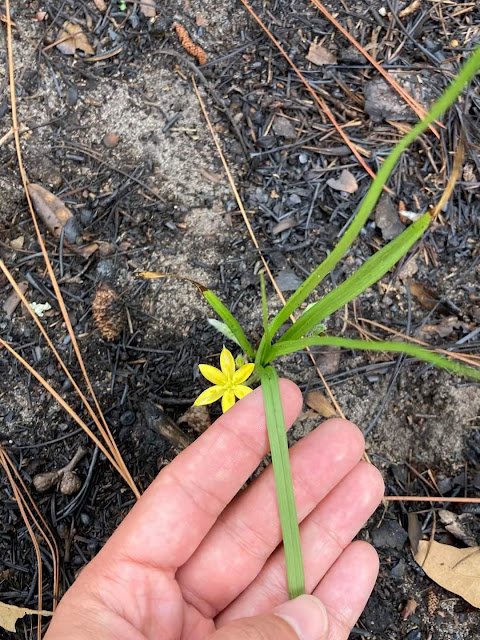Glossyseed yellow stargrass (Hypoxis sessilis) is a perennial herbaceous wildflower vouchered throughout much of Florida from the Panhandle to Miami-Dade County. It also is reported from east Texas and Oklahoma within the Southeastern Coastal Plain to North Carolina. Throughout its range, it occurs in wet savannas and open pinelands.
Yellow stargrasses can be a bit difficult to distinguish from each other, but this one is noticeable by its realtively wide and upright basal leaves and the fact that the solitary flowers are produced near it base. The leaves, unlike many in this genus, are evenly pubescent.
Like other members of this genus, the flowers are bright yellow and comprised of 6 tepals - 3 petals and 3 sepals that look alike. These are produced near the base of the plant on a short stalk. Several flowers may occur on each. Flowering occurs in early spring to summer and seems to be stimulated by fire. They tend to be pollinated mostly by bees.
Yellow stargrasses are not routinely propagated by native nurseries affiliated with FANN - the Florida Association of Native Nurseries, or by others. Their diminutive size seems to preclude a demand and their need for moist to wet soil conditions limits where they could be effectively added.
These photos were taken by my friend, Alex de la Paz and used by permission.







